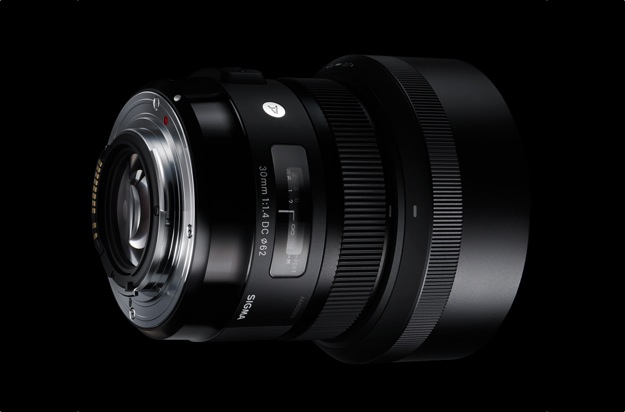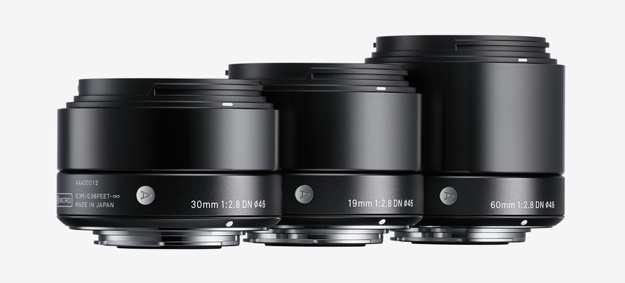
Sigma has announced four new lenses in their ART product line for the American market, which includes three lenses designed for mirrorless interchangeable lens cameras and one for DSLR cameras with APS-C-size sensors.
The 30mm F1.4 DC HSM (shown above) wil be available with Sigma, Canon, and Nikon DSLR mounts. The lens features Sigma’s new USB dock, which enables firmware updates and focusing adjustments. Sigma says “new optical configurations of nine elements in eight groups, as well as rounded aperture blades” provide “pleasing sharpness and beautiful bokeh background.” The angle view is equivalent to 45mm on a 35mm camera – or similar to human vision. The minimum focusing distance is 11.8 inches and a maximum magnification ratio for the lens is 1:6.8.
Sigma designed the 30mm F1.4 DC HSM with an optimized power distribution that helps to minimize field curvature, prevent loss of image quality at the edges of photographs, and produce impressive image quality. The optimized auto focus (AF) algorithm and rear focusing system ensures smooth and accurate focusing.
The three other lenses offer a few new features. The 30mm F2.8 DN, 19mm F2.8 DN, and 60mm F2.8 DN lens will be available for both Micro Four Thirds (MFT) or Sony’s E-Mount (NEX) camera systems.
The 60mm F2.8 DN features a natural perspective of midrange telephoto lens combined with a shallow depth of field. The lens has an angle of view equivalent to 120mm on MFT and 90mm on the E-mount system (35mm equivalent focal length). The minimum focusing distance is 19.7 inches and the maximum magnification is 1:72.2. The lens contains Special Low Dispersion (SLD) glass, which helps minimize axial and transverse chromatic aberration.
The 19mm F2.8 DN is a high-performance, wide-angle lens with an angle view equivalent to 38mm on the MFT and 28.5mm on the E-mount system (35mm equivalent focal length). The lens is appropriate for studio photography, architecture, and starry skies. The minimum focusing distance is 7.9 inches and maximum magnification is 1:7.4.
The 30mm F2.8 DN is a high-performance standard lens. The lens has an angle view equivalent of 60mm (MFT) and 45mm (E-mount), 35mm equivalent focal length. The lens works well for formal portraits, documentary photography, travelogues, and everyday shooting. It includes a double-sided aspherical lens that enhances its optical performance. The minimum focusing distance is 11.8 inches and maximum magnification is 1:8.1.
Sigma has not set a price or release date for the lenses.

Editors' Recommendations
- Sony’s new ultra-wide, ultra-bright lens is the widest E-mount prime yet
- The best Sony lenses for E-mount mirrorless cameras
- Sigma’s Art series continues trek into mirrorless lenses with new 24-70mm f/2.8
- The best Micro Four Thirds lenses
- Sigma’s new full-frame mirrorless lenses mix bright apertures and smaller bodies


